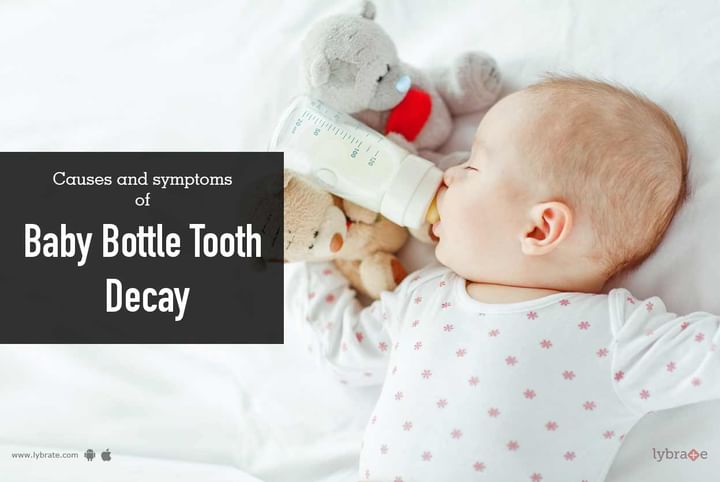Causes and symptoms of Baby Bottle Tooth Decay
Baby bottle syndrome is a decay that affects the milk teeth in children who fall asleep with a bottle containing sugary drinks. Prolonged contact between the liquid and the surface of the teeth promotes the destruction of tooth enamel.
Causes and symptoms
The symptoms of baby bottle tooth decay are discoloration of the tooth (enamel), with the formation of yellow or black spots on the surface.
When a child falls asleep with a bottle containing sugary liquids such as milk, fruit juice, sugar water, or with a pacifier dipped in honey or syrup - bacteria present in the mouth, (streptococcus mutans to be precise) transform the sugar into lactic acid.
Normally, the saliva helps to neutralize this acidity, but its production declines during sleep. Thus, teeth are subjected to acid attacks that promote the formation of cavities. As milk teeth are weaker than permanent teeth, decay can be quick with enamel getting hit first, then dentin and finally the pulp in the centre of the tooth.
At this stage, the infection can spread rapidly to other teeth, causing significant pain when the dental abscess formation often requires removal of the damaged teeth.
Precautions
To avoid it, the first thing to do of course is to stop giving your child a sweetened drink at night or when putting the child for a nap. You should also brush your baby's milk teeth twice a day, especially at bedtime with a cotton swab and water and in a year - with a toothbrush and toothpaste.
In case, the teeth are already decayed or you have doubts about it (staining of the tooth that becomes pink or white can be the harbinger of decay), consult a paediatric dentist immediately. Decayed milk teeth may lead to deformation of the permanent teeth if not attended to immediately.



+1.svg)
